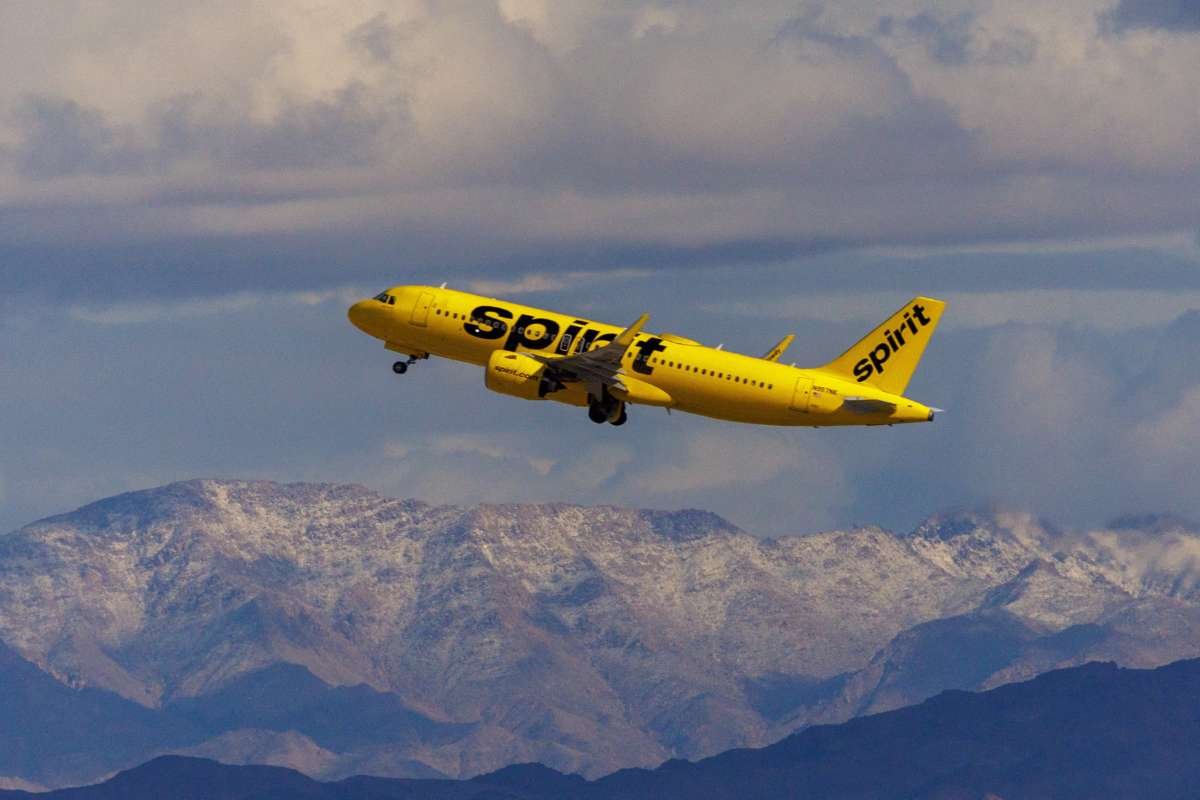Key Points:
- Spirit Airlines will cut November flights by 25% due to operational and financial challenges.
- The reduction reflects ongoing struggles in the low-cost carrier’s business model.
- The move aims to stabilize operations while addressing market and demand pressures.
Spirit Airlines will reduce its November schedule by 25% as part of efforts to cut costs and stabilize operations following its second bankruptcy filing in less than a year. CEO Dave Davis informed employees of the changes in a memo on Wednesday, cautioning that additional workforce reductions may follow as the airline adjusts its network and fleet strategy.
The move highlights the airline’s attempts to position itself more efficiently in a competitive market where larger carriers are expanding capacity and capturing share.
Restructuring Flight Capacity
Spirit’s planned reduction mirrors capacity cuts made earlier this year after it emerged from bankruptcy in March. From March through June, the carrier operated at lower capacity levels, and the November adjustments signal that this approach will continue in the near term.
According to Davis, the airline’s network will be optimized to focus on its strongest-performing markets, even if that means exiting certain routes or reducing overall fleet utilization. Discussions are ongoing with vendors and aircraft lessors to realign operations with market demand.
Impact on Employees
Alongside schedule changes, the carrier is reviewing staffing levels as it moves toward a leaner operating model. Davis told staff that “evaluations will inevitably affect the size of our teams as we become a more efficient airline.”
Spirit has already announced furloughs and demotions of hundreds of pilots, while some flight attendants have taken voluntary unpaid leave. Talks with labor unions are expected to continue in the coming weeks as the airline works through adjustments related to its workforce and fleet.
Financial Pressures Mount
Since emerging from bankruptcy in March, Spirit Airlines has faced significant financial headwinds. The airline reported a loss of nearly $257 million between March 13 and the end of June. Higher operating costs and softer-than-expected domestic travel demand have weighed on results, making cost-cutting measures essential.
Earlier this month, Spirit Airlines reduced flights to 11 destinations and canceled plans for a 12th route. These moves underscore its efforts to streamline operations while competitors such as United Airlines, Frontier Airlines, and JetBlue Airways expand to capture dislocated demand.
Competition and Market Conditions
Spirit, known for its bright yellow aircraft, low base fares, and additional fees, once carved out a successful niche in the ultra-low-cost market. However, changing travel patterns and heightened competition have pressured the business.
While the airline hoped for greater stability after restructuring earlier this year, it exited bankruptcy with elevated costs and only a partial recovery in passenger demand. Competitors have been quick to step into markets where Spirit has pulled back, intensifying pressure on the carrier to refine its network.
Looking Ahead
Despite near-term turbulence, Spirit Airlines is working to stabilize its operations by cutting costs and focusing on profitable routes. The planned November flight reductions and ongoing workforce evaluations reflect management’s push to align the company’s structure with market realities.
The carrier’s future performance will depend on how effectively it manages expenses while retaining customer loyalty in a competitive sector. For now, Spirit Airlines is signaling to both employees and investors that it is prepared to make significant adjustments to secure longer-term stability.
Source: https://finance.yahoo.com/news/spirit-slash-flight-capacity-25-021055546.html










